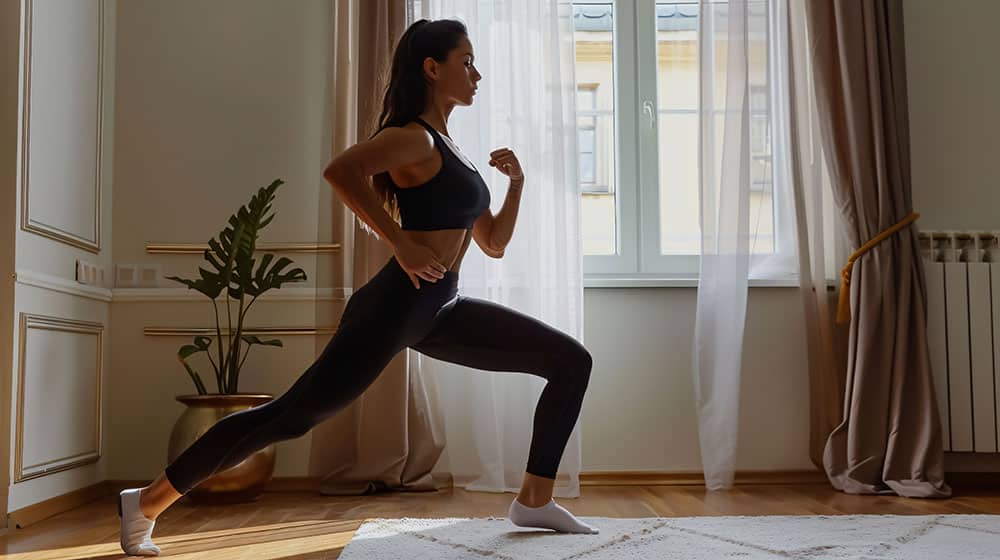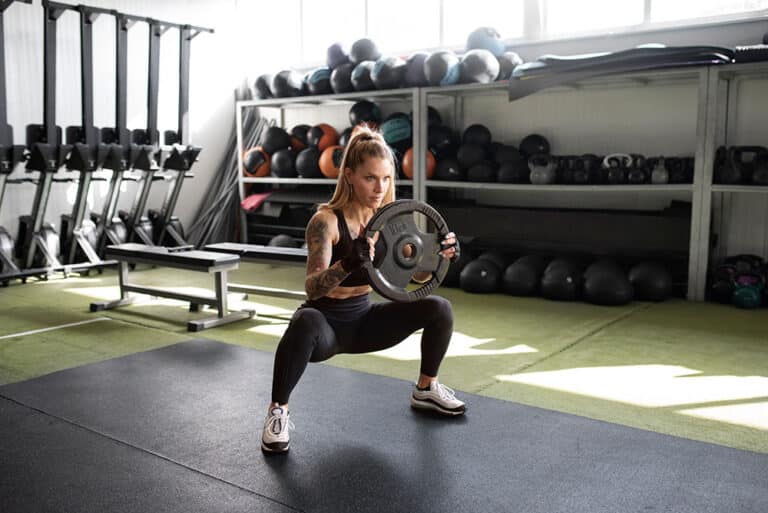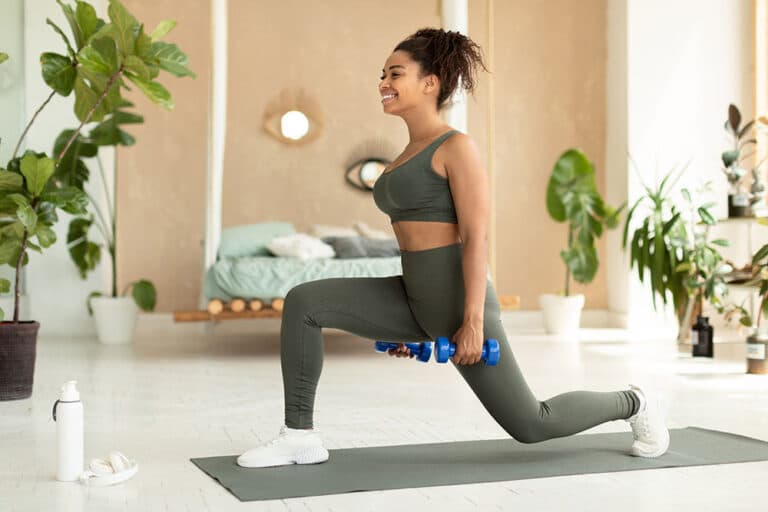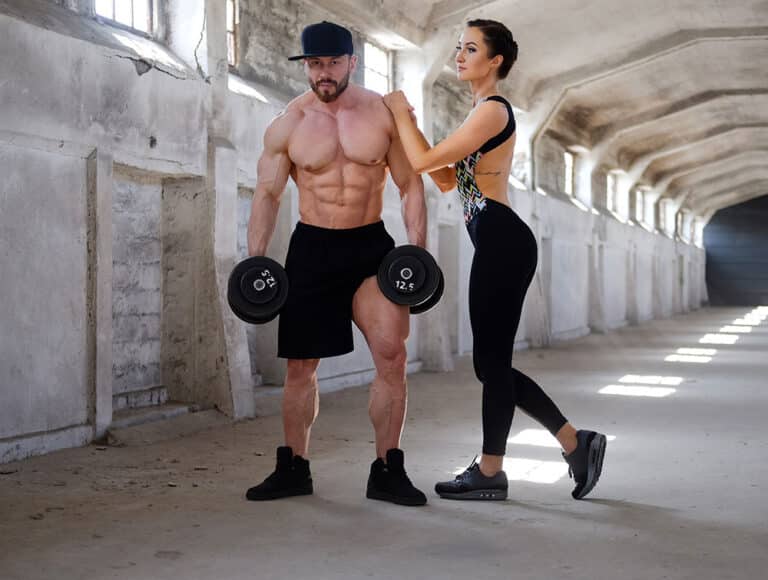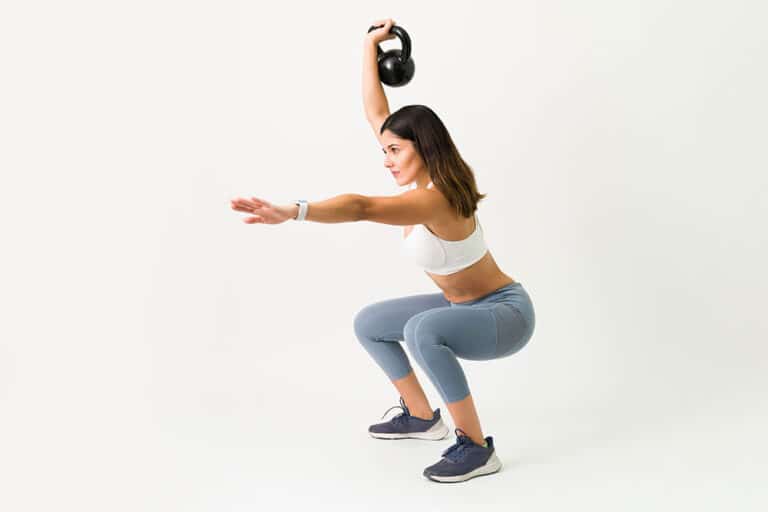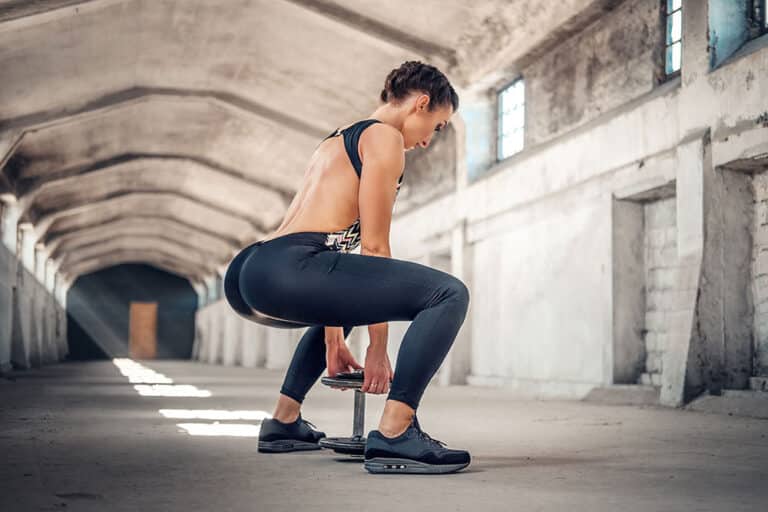Leg Exercises for Travel
Importance of Leg Workouts
Leg workouts are vital for maintaining a balanced body and improving overall fitness, especially while traveling when routine exercise may be disrupted. Leg exercises are essential because they target the major muscle groups in the lower body, such as the glutes, quadriceps, and hamstrings. These muscles create a strong, stable foundation which is crucial for multiple activities and movements (Healthline).
Neglecting leg workouts can lead to muscle imbalances and reduced stability, impacting overall athletic performance and daily activities. Regular leg exercises can help enhance strength, speed, and balance, and are pivotal in preventing injuries and chronic conditions. By including leg workouts in their routine, fitness enthusiasts can ensure that they maintain their strength and stability even while traveling.
Benefits of Leg Exercises
Leg exercises offer a plethora of benefits, making them an indispensable part of a fitness regimen. Here are some advantages of incorporating leg workouts, even during travel:
-
Enhanced Athletic Performance: Strong leg muscles can improve coordination and stability, which is beneficial for various sports and physical activities. This translates to better performance in movements like running, jumping, and balancing (Healthline).
-
Improved Balance and Posture: Unilateral leg exercises, such as lunges and single-leg squats, help correct muscular imbalances, engage core muscles, and improve overall balance. This contributes to better posture and alignment (Healthline).
-
Injury Prevention: Strengthening the muscles in the legs reduces the risk of injuries, especially in the knees and lower back. Exercises that improve stability and balance can further enhance injury prevention (Healthline).
-
Management of Chronic Conditions: Regular leg workouts can help manage chronic conditions such as arthritis, heart disease, and diabetes by promoting better blood flow and reducing stiffness in the joints.
-
Hormone Release: Rigorous leg exercises stimulate the release of essential hormones like cortisol, testosterone, and human growth hormone (HGH). These hormones aid in muscle repair, growth, stress response, and metabolism (Healthline).
-
Mental Health Benefits: Beyond physical health, leg exercises can contribute to mental well-being by reducing stress and anxiety levels, thanks to the release of endorphins during physical activity.
To maintain leg strength and stability while traveling, consider incorporating a variety of leg exercises. These might include bodyweight squats, lunges, and calf raises. Check out our article on a quick leg workout with no equipment for an efficient routine you can perform anywhere.
By understanding the importance and benefits of leg exercises, health enthusiasts can prioritize lower body workouts in their travel fitness routine, ensuring they maintain both strength and overall health.
Prevention and Tips
For health enthusiasts, staying active while traveling is crucial to prevent conditions like deep vein thrombosis (DVT) and maintain overall leg health. Here are some essential tips and exercises you can adopt to ensure your legs stay healthy on the go.
Preventing DVT
Deep vein thrombosis (DVT) is a severe condition caused by blood clots forming in the veins, often due to prolonged inactivity. According to the National Blood Clot Alliance, keeping your body moving while traveling is essential to reduce the risk of DVT, often referred to as “Economy Class Syndrome.” Whether you’re on a plane or a long road trip, incorporating small movements can be a critical preventive measure.
Dr. Harbinder Chadha, an orthopedic surgeon, suggests the following to reduce DVT risk during long car trips (Sharp Health News):
- Taking an aspirin before travel (consult a doctor first)
- Making frequent stops every 2-3 hours to stretch or walk
- Performing exercises in the car to stimulate blood flow
These tips help keep blood flowing and reduce the chances of developing blood clots.
Exercises for Road Trips
During long road trips, it’s important to incorporate exercises that can be done right in your car seat to maintain leg health and prevent DVT. Here are some practical exercises:
Ankle Pumps
This simple exercise helps stimulate circulation in the legs.
| Step | Instructions |
|---|---|
| Step 1 | Sit comfortably in your seat |
| Step 2 | Raise your toes upward while keeping your heels on the floor |
| Step 3 | Lower your toes and raise your heels |
| Step 4 | Repeat 10-15 times every hour |
Seated Knee Lifts
Strengthen your thighs and improve blood flow with knee lifts.
| Step | Instructions |
|---|---|
| Step 1 | Sit up straight with both feet flat on the floor |
| Step 2 | Lift one knee towards your chest without using your hands |
| Step 3 | Hold for 2-3 seconds and lower it back |
| Step 4 | Alternate legs and repeat 10 times per leg |
Seated Glute Stretches
Glute stretches help minimize stiffness from sitting for long periods.
| Step | Instructions |
|---|---|
| Step 1 | Sit with both feet flat on the floor |
| Step 2 | Place your right ankle on your left knee |
| Step 3 | Gently press down on your right knee to deepen the stretch |
| Step 4 | Hold for 15-20 seconds, then switch legs |
For more detailed instructions, you can check our guides on bodyweight lunge variations and calf exercises without weights.
Incorporating these exercises can significantly enhance your leg health during road trips and reduce the risk of DVT. For those seeking more leg workouts that do not require equipment, explore our quick leg workout no equipment options.
Effective Leg Workouts
For health enthusiasts looking to keep their legs strong while on the go, these effective leg exercises can be performed without any equipment, making them perfect for travel. Incorporating these into your routine will help maintain strength, stamina, and overall health.
Ankle Pumps
Ankle pumps are an excellent way to keep the blood circulating in your legs, particularly after long periods of sitting, like in a car or on a plane. This simple move can help prevent discomfort and reduce the risk of Deep Vein Thrombosis (DVT).
- Sit comfortably with your feet flat on the floor.
- Lift your toes while keeping your heels on the ground.
- Lower your toes and lift your heels.
- Repeat this motion 10-15 times for each leg.
| Exercise | Repetitions |
|---|---|
| Ankle Pumps | 10-15 (each leg) |
Engaging in these exercises can be beneficial in preventing issues linked to prolonged periods of inactivity.
Seated Knee Lifts
Seated knee lifts are effective for activating the muscles in your thighs and core. This exercise can be done from the comfort of your seat, whether you’re in a hotel room or traveling.
- Sit upright with your feet flat on the floor.
- Lift one knee toward your chest as high as you can.
- Hold for a few seconds, then lower it back down.
- Repeat for the other leg.
- Perform 10-15 lifts per leg.
| Exercise | Repetitions |
|---|---|
| Seated Knee Lifts | 10-15 (each leg) |
Seated Glute Stretches
Seated glute stretches are beneficial for stretching the glutes and the lower back, providing relief from travel-induced stiffness.
- Sit with your back straight.
- Cross one ankle over the opposite knee, forming a figure-four shape.
- Gently lean forward to deepen the stretch.
- Hold for 15-20 seconds, then switch legs.
| Exercise | Hold Time |
|---|---|
| Seated Glute Stretches | 15-20 seconds (each leg) |
These exercises will not only keep your legs healthy but also enhance your overall athletic performance, allowing for greater stability and balance. For more ideas on effective leg exercises, visit our articles on wall exercises for legs and calf exercises without weights.
Workout Options While Traveling
When you’re on the go, maintaining your fitness routine doesn’t have to be a challenge. Here are some effective leg exercises while traveling that you can perform to stay fit and healthy, no matter where you are.
Hotel Room Workout
Hotel rooms offer a convenient and private space to perform your leg exercises. A 20-minute hotel room workout is perfect for those looking to get a quick but effective leg workout without any equipment. Some exercises to include:
- Bodyweight Squats: Improve strength and endurance. Learn how to do perfect squats here.
- Lunges: Perform various lunges to target different muscle groups. Discover different variations here.
- Calf Raises: Strengthen your calves. Check out calf exercises without weights.
Here’s an easy-to-follow format for a quick leg workout:
| Exercise | Duration | Reps |
|---|---|---|
| Squats | 30 sec | 15 |
| Lunges | 30 sec | 10 each leg |
| Calf Raises | 30 sec | 20 |
| Rest | 1 min | – |
For more intensive options, consider the quick leg workout no equipment.
Beginner Bodyweight Exercises
If you’re new to exercise or just looking for low-impact options, beginner bodyweight exercises are ideal. These simple yet effective movements can be done anywhere, anytime, without any special equipment.
- Knee Push-ups: Strengthen your lower body with supported push-ups.
- Wall Sits: Work your thighs and glutes without any movement. For more ideas, explore wall exercises for legs.
- Glute Bridges: Activate your hamstrings and glutes.
Beginner circuit example:
| Exercise | Duration | Reps |
|---|---|---|
| Wall Sits | 30 sec | – |
| Glute Bridges | 30 sec | 15 |
| Knee Push-ups | 30 sec | 10 |
| Rest | 1 min | – |
Focusing on these can lead to more advanced routines like the bodyweight leg challenge.
Playground Workout
A playground can be a surprisingly effective place to exercise, utilizing available structures such as benches and bars for your leg routines. This engaging environment can turn your workout into a fun activity.
- Step-ups on a Bench: Use a bench for step-ups to work your quads.
- Pistol Squats: Use playground equipment for support while performing pistol squats. Learn how to do pistol squats.
- Bench Jumps: Perform plyometric exercises like bench jumps. Find more exercises here.
Playground circuit example:
| Exercise | Duration | Reps |
|---|---|---|
| Step-ups | 30 sec | 15 each leg |
| Pistol Squats | 30 sec | 5 each leg |
| Bench Jumps | 30 sec | 10 |
| Rest | 1 min | – |
For more tips on workouts while traveling, visit Nerd Fitness.
By utilizing these travel-friendly workout options, you can maintain strength, stamina, and overall health, no matter where your travels take you. Explore more leg exercise routines like morning leg exercises and how to build leg muscle without weights to keep your legs in top shape.
Exercise for Health Enthusiasts
For health enthusiasts, incorporating leg exercises into their fitness routine is essential. Focusing on strength, stamina, and overall health can lead to enhanced athletic performance, better stability, and overall well-being. Let’s explore some key leg exercises for different fitness goals.
Leg Exercises for Strength
Strengthening leg muscles like the glutes, quads, and hamstrings can create a solid foundation for the body, aiding in various physical activities and reducing injury risk (Healthline). Incorporate these strength-focused exercises:
- Bodyweight Squats: Squats target glutes, quads, and hamstrings. Learn more about [how to do bodyweight squats].
- Lunges: Lunges engage multiple leg muscles and enhance balance.
- Calf Raises: Strengthen calf muscles with raises. Refer to [calf exercises without weights].
| Exercise | Target Muscles | Recommended Reps |
|---|---|---|
| Bodyweight Squats | Glutes, Quads | 3 sets of 15-20 |
| Lunges | Quads, Hamstrings | 3 sets of 12-15 |
| Calf Raises | Calves | 3 sets of 15-20 |
Leg Exercises for Stamina
Building stamina involves exercises that challenge cardiovascular endurance and muscular endurance. These activities keep your legs feeling strong throughout the day:
- Jumping Jacks: A full-body workout that also improves leg stamina.
- High Knees: Targets the quads and enhances cardiovascular fitness.
- Lunge Jumps: A more intense variation of standard lunges, suitable for stamina and explosive strength.
| Exercise | Target Muscles | Recommended Duration |
|---|---|---|
| Jumping Jacks | Full Body, Legs | 3 sets of 1 minute |
| High Knees | Quads, Calves | 3 sets of 30-60 secs |
| Lunge Jumps | Quads, Glutes | 3 sets of 10-15 reps |
For more intensive movements to build stamina, check [plyometric exercises for legs].
Leg Exercises for Health
General leg exercises help in managing diseases, enhancing metabolic rate, and stimulating hormones for muscle growth and stress management (Healthline).
- Seated Knee Lifts: A gentle exercise that can be performed anywhere, aiding mobility and core strength.
- Seated Glute Stretches: Flexibility and muscle relaxation.
- Wall Sits: Enhance endurance and muscle strength.
| Exercise | Target Muscles | Recommended Duration |
|---|---|---|
| Seated Knee Lifts | Quads, Core | 3 sets of 15-20 |
| Glute Stretches | Glutes, Lower Back | 3 sets of 30 secs |
| Wall Sits | Quads, Glutes | 3 sets of 1 minute |
For more ideas on leg exercises tailored to various needs and situations, such as those for seniors, beginners, or those with joint issues, check out [leg exercises for elderly] and [leg exercises for bad knees].
Engaging in these exercises ensures that you maintain strong, healthy legs, supporting overall fitness and well-being especially while traveling. For quick leg workouts with no equipment, explore our guide on [quick leg workout no equipment].
Managing DVT with Exercise
Staying active and incorporating leg exercises into a routine is essential for managing Deep Vein Thrombosis (DVT). Here, we’ll explore why movement is crucial and highlight effective leg exercises that can help.
Importance of Movement
For individuals with DVT, movement plays a vital role in improving blood circulation and alleviating symptoms of venous insufficiency. Exercise helps to strengthen leg muscles, which in turn push blood upward, reducing the risk of clot formation.
Walking is a simple yet effective exercise that can be started as soon as blood thinners begin to work. Medical professionals often recommend wearing compression stockings to aid blood flow during walks. It’s important to begin exercise routines slowly and seek medical advice before starting any new physical activity.
Sitting for long periods without moving increases the risk of DVT. Regular movement, such as walking for five minutes every hour during long plane or car rides, is highly recommended. Moreover, one should avoid crossing legs while sitting as it can hinder circulation.
Leg Exercises for DVT
Incorporating specific leg exercises can significantly help manage DVT. Here are some recommended exercises:
Ankle Pumps
Ankle pumps are an effective exercise for improving circulation in the legs. They can be done while sitting or lying down. Flex and point your toes up and down, repeating 30 times every hour.
Leg Extensions
Leg extensions help in enhancing blood flow and strengthening leg muscles. While sitting, straighten one leg out in front of you and hold it for a few seconds before lowering it back down. Repeat 30 times for each leg every hour.
Seated Marches
Seated marches are a great way to keep the legs active while sitting. Simply lift your knees alternately as if you were marching in place. Aim for 30 repetitions every hour.
Here’s a table summarizing these exercises:
| Exercise | Repetitions | Frequency |
|---|---|---|
| Ankle Pumps | 30 | Every Hour |
| Leg Extensions | 30 per leg | Every Hour |
| Seated Marches | 30 | Every Hour |
Gradually increasing walking duration over several weeks is also beneficial. Start with short walks lasting a few minutes several times a day and slowly build up to a 40-minute walk once a day. Always include a warm-up and cool-down period by walking slowly.
For more in-depth guides on leg exercises, check out our articles on quick leg workout no equipment and calf exercises without weights. Additionally, consider exploring leg exercises for bad knees if you experience discomfort.
- About the Author
- Latest Posts
Johnnie D. Jackow Sr., the founder and CEO of Total Body Fitness, Worldwide, has a long-standing career in the fitness industry. He began as a certified personal trainer in the mid-90s and soon after authored his first weight loss book in 1998. This led to the launch of Total Body Fitness, Nationwide in the USA at the same time. Johnnie gained recognition as the fitness guru of his time, running infomercials on local TV late at night in Houston, Texas. Over the years, he has helped more than 40,000 individuals from all over the world achieve their health and fitness goals. With over 60,000 hours of documented training in integrative functional medicine, he completed his PhD in human physiology in 2010. His primary objective is to assist people in reaching their health and fitness goals through alternative approaches rather than relying solely on conventional medicine and pharmaceutical drugs. Today, with almost three decades of experience under his belt, Johnnie continues to be a leader in health and fitness.

